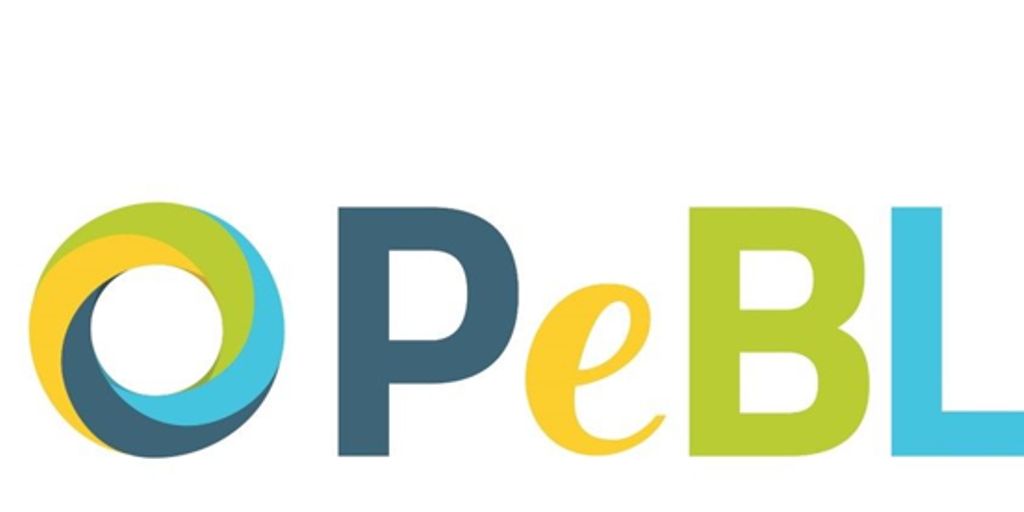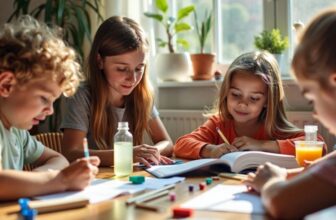
In today’s fast-paced world, finding effective ways to engage children in learning activities at home is crucial for their development. This article explores 10 fun and educational activities that not only entertain but also enhance various skills in young learners. From simple crafts to academic exercises, these activities are designed to boost learning and foster a love for knowledge in a comfortable home environment.
Key Takeaways
- Engage children with hands-on activities like Paper Building Blocks and the Water Walking Experiment to enhance their problem-solving and scientific thinking.
- Incorporate daily reading and phonics activities to improve language skills and comprehension.
- Utilize fun math games and educational workbooks to strengthen numerical and analytical abilities.
- Encourage creativity and fine motor skills through craft-oriented projects.
- Foster social-emotional development by integrating activities that promote empathy, cooperation, and emotional awareness.
1. Paper Building Blocks

Engage children in an engineering challenge with paper building blocks. This activity demonstrates how a seemingly weak material like paper can transform into a sturdy structure capable of supporting weights. Start by folding paper into various geometric shapes and then challenge the kids to build the tallest or strongest structure they can imagine.
- Step 1: Gather materials like different types of paper and scissors.
- Step 2: Fold the paper into blocks or other shapes.
- Step 3: Experiment with building different structures.
- Step 4: Test the strength by placing small weights on the structures.
This activity not only boosts creativity but also enhances understanding of basic physics and engineering principles.
2. Water Walking Experiment

The Water Walking Experiment is a super-easy and fun way to introduce basic scientific concepts at home. This activity demonstrates capillarity as water ‘walks’ over paper towel bridges between cups. Additionally, it showcases color mixing when different colored waters blend to create new hues.
Steps to Conduct the Experiment:
- Gather materials: You will need multiple cups, food coloring, and paper towels.
- Fill the cups with water and add different food coloring to each.
- Arrange the cups in a circle or a line, making sure some are empty to catch the mixed colors.
- Place one end of a paper towel in a cup with colored water and the other end into an adjacent empty cup. The water will begin to ‘walk’ through the paper towel into the empty cup.
- Observe as the colors mix in the cups that receive the walking water.
This experiment not only entertains but also educates children on the principles of capillarity and color theory.
3. Reading at Home

Encouraging your child to engage in reading at home can significantly enhance their literacy skills and foster a lifelong love for books. Here are some effective strategies to make reading an integral part of home life:
- Reread all your child’s comfort books. This repetition is not only comforting but also beneficial for their developing literacy skills, as it allows them to absorb the language more thoroughly.
- Take advantage of everyday reading opportunities. Your child may become more aware of signs, notices, and posters. This helps reinforce the importance of reading and supports their learning.
- Make it a routine to READ TOGETHER EVERY NIGHT. This simple habit can make a big difference in their reading abilities and overall academic performance.
Please share these ideas with any families who might benefit, and if you have a favorite at-home activity to share, add it in the comments below!
4. Maths at Home

Math at home offers a unique opportunity to make learning both fun and effective. Engaging in math activities can help children develop a love for numbers and problem-solving skills. Here are some ways to incorporate math into everyday activities:
- Play math games: Games like baseball multiplication or ‘rock, paper, scissors’ with a multiplication twist can make learning math exciting. These games not only entertain but also reinforce mathematical concepts in a playful environment.
- Practice with flashcards: Flashcards are a simple yet effective tool for practicing multiplication, addition, and subtraction. They can be used in various games or as quick review sessions.
- Use everyday situations: Encourage your child to apply math in real-life situations, such as counting items during shopping or measuring ingredients while cooking. This practical application helps solidify their understanding and makes math relevant.
Math can be hard, but math at home can be a little less stressful. This is especially true when you allow kids to learn things like multiplication through play.
5. Phonics Activities

Engaging in DIY phonics activities can be a delightful and educational way to enhance your child’s reading skills. Here are some simple yet effective activities to try at home:
- Play phonics games like Junior Scrabble, Bananagrams, and Boggle. These games help children focus on blending letter sounds to create words.
- Conduct word searches together, and then challenge your child to create their own.
- Write out a word, cut it into pieces, and ask your child to rearrange them in the correct order to reinforce spelling and phonemic awareness.
Learning how to pronounce all the phonics sounds correctly is crucial for developing reading proficiency.
These activities not only make learning fun but also significantly boost your child’s ability to read and write effectively.
6. Vocabulary Games

Engaging in vocabulary games at home can be a delightful way to enhance your child’s word knowledge and language skills. These activities not only make learning new words fun but also help in improving spelling and word recognition. Here are some effective ways to incorporate vocabulary games into your daily routine:
- Play word and spelling games like Junior Scrabble, Bananagrams, and Boggle. These games encourage children to focus on blending letter sounds to make words.
- Create a ‘topic game’ where each participant must name items that fit a certain category using each letter of the alphabet. For example, choosing animals might yield ‘Aardvark’, ‘Baboon’, ‘Chicken’, etc.
- Use language games to read and remember poems, spot words within words, or even create new words for common items.
Engaging regularly in these games can significantly boost your child’s vocabulary and overall language proficiency.
7. Picture Books and Fiction

Exploring the world of picture books and fiction can be a transformative experience for children, offering them a window into diverse cultures, emotions, and narratives. Picture books offer a rich tapestry of images and words, encouraging children to dive deeper into meanings and unravel complex emotions and stories. These books are not just for the very young; older children can greatly benefit from them as well, including engaging with comics and simple chapter books.
- Encourage your child to practice storytelling aloud and even try writing their own stories.
- Listening to stories read aloud can enhance vocabulary and develop speaking and listening skills.
- For a more interactive experience, consider watching adaptations of popular children’s books and discussing the differences between the books and the films.
Engaging with picture books and fiction not only entertains but also educates, making it a crucial part of learning at home.
8. Educational Workbooks

Educational workbooks can transform home learning into an engaging and interactive experience. The best workbooks won’t even feel like work at all, making them a perfect tool for both fun and education. With resources like Houghton Mifflin Harcourt’s Achieve! Workbooks, children are drawn into learning with vibrant colors, humor, and captivating photos. These workbooks can be downloaded for free, providing easy access to high-quality educational content.
Workbooks are an excellent way to keep children occupied while they learn new concepts in a structured manner.
Here are some steps to effectively use educational workbooks at home:
- Choose workbooks that align with your child’s current educational needs.
- Incorporate them into your daily learning routine to provide consistency.
- Combine workbook sessions with practical activities to enhance learning.
- Review completed sections together to reinforce understanding and celebrate progress.
9. Craft Oriented Projects

Crafts are not just a fun activity; they are a powerful tool for educational development. Engaging in craft-oriented projects can help children enhance their creativity, improve fine motor skills, and learn to follow complex instructions. Crafts can also be seamlessly integrated with educational themes, making learning both enjoyable and effective.
- Start with basic sewing: Introduce children to simple sewing tasks like buttoning or making a basic stitch. This teaches them precision and self-reliance.
- Create tactile games: Use materials like fabric, paint, and glitter glue to make 3D models and tell stories. This encourages narrative skills and sensory development.
- Set up a makerspace: Dedicate an area where children can freely explore and build projects. This fosters curiosity and innovative thinking.
Remember to stock up on necessary supplies before starting a craft project to avoid interruptions.
10. Social-Emotional Skill Building

Social-emotional skill building is crucial for children as it helps them navigate various social interactions and understand their own emotions better. One effective activity is Emotion Charades, where children pick an emotion from a hat and act it out, enhancing their empathy and recognition of feelings.
- Role-playing: This can be done using puppets or during play to simulate social situations.
- Problem-solving games that require cooperation and understanding of others’ perspectives.
- Activities that promote self-awareness, such as maintaining a feelings journal.
Encouraging children to participate in these activities helps them develop a robust set of social skills that are essential for personal and academic success.
Conclusion
Incorporating fun educational activities at home is not only a great way to keep children engaged but also enhances their learning across various domains. From academic skills to social-emotional growth, the activities outlined in this article provide a diverse range of options to suit different interests and learning styles. Whether it’s through crafting, interactive games, or simple exercises, each activity is designed to stimulate young minds and foster a love for learning. Parents and educators alike can easily implement these ideas to create a rich, educational environment at home. Remember, the key to effective learning is to make it enjoyable and interactive, so feel free to adapt these activities to better fit your child’s unique needs and interests.
Frequently Asked Questions
What are paper building blocks?
Paper building blocks are a creative educational activity where children learn engineering principles by shaping paper into sturdy structures that can hold weights, such as a couple of Oreos.
How does the water walking experiment work?
The water walking experiment teaches children about water’s adhesive and cohesive properties by demonstrating how water can move along pieces of colored paper, creating a ‘walking’ effect.
Are there any benefits to reading at home?
Reading at home enhances vocabulary, comprehension, and critical thinking skills. It also fosters a lifelong love for reading and learning in children.
What kind of maths activities can be done at home?
Maths activities at home can range from simple worksheets to interactive games that teach basic arithmetic, geometry, and problem-solving skills.
What are phonics activities?
Phonics activities involve teaching children the sounds of the letters and how they combine to form words, which is crucial for developing reading skills.
What are some effective vocabulary games?
Effective vocabulary games include word matching, crossword puzzles, and word searches that help children expand their vocabulary and improve their language skills.






